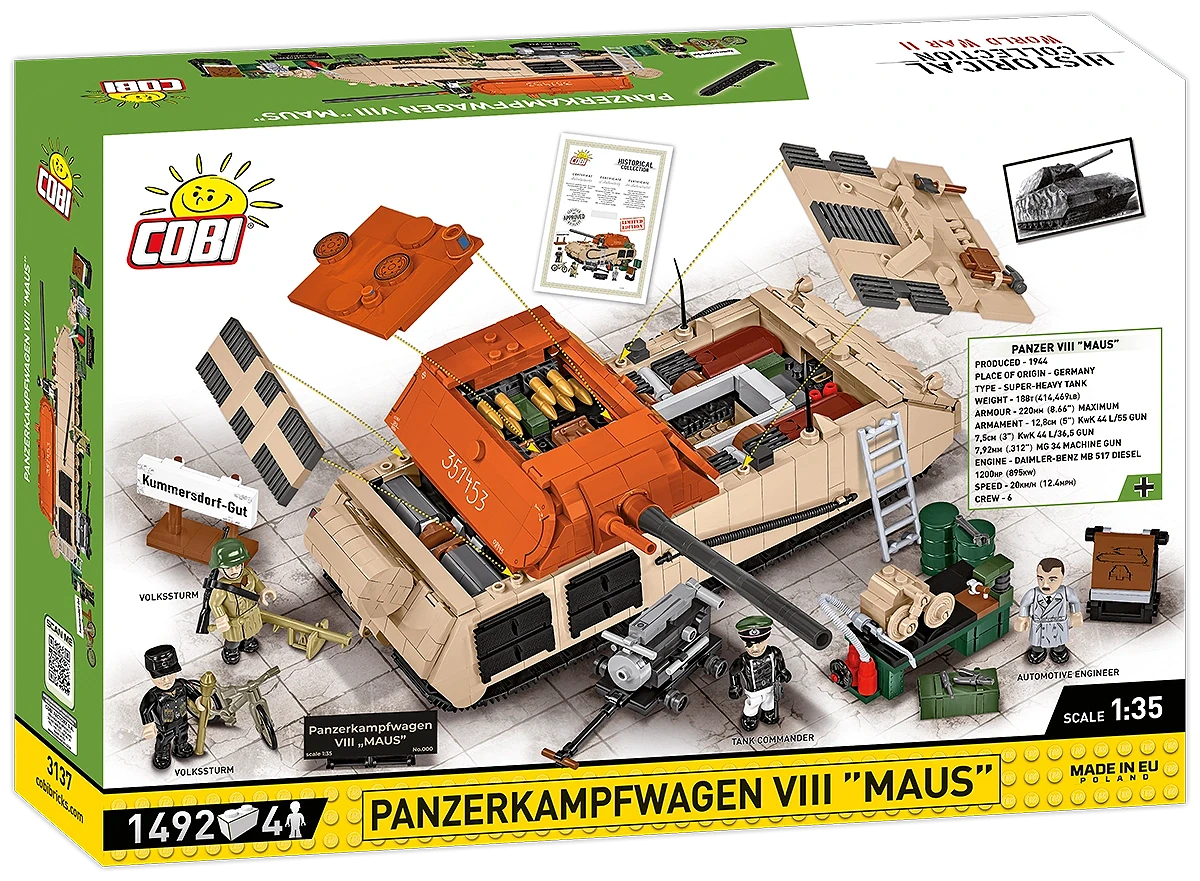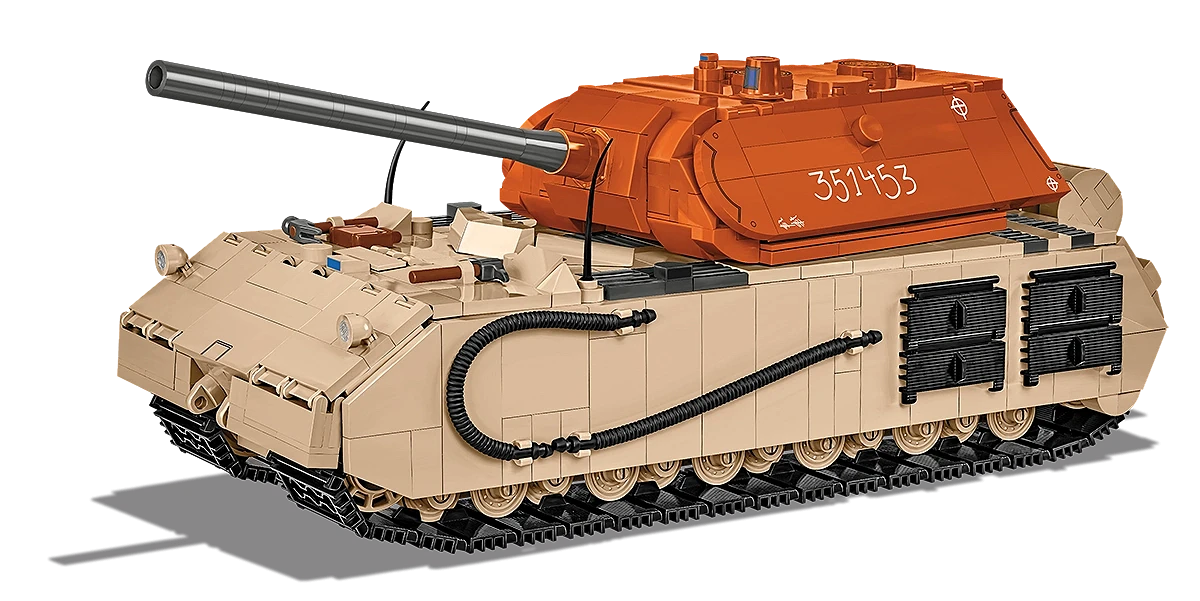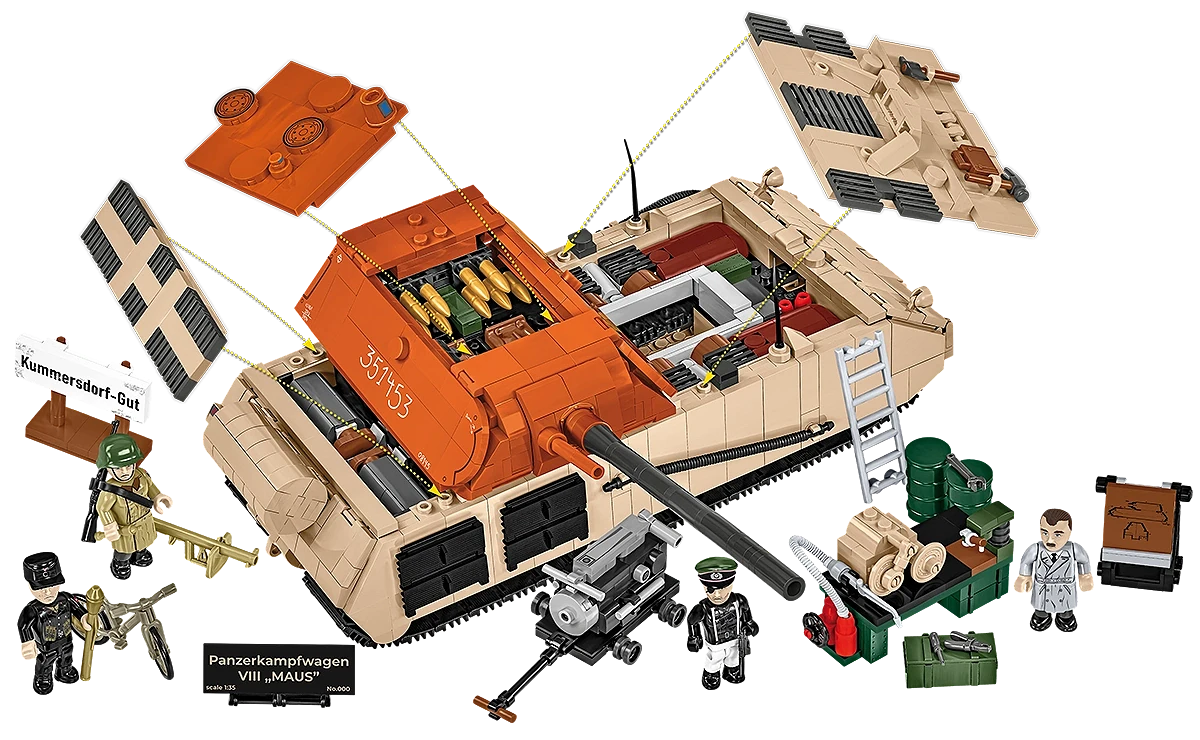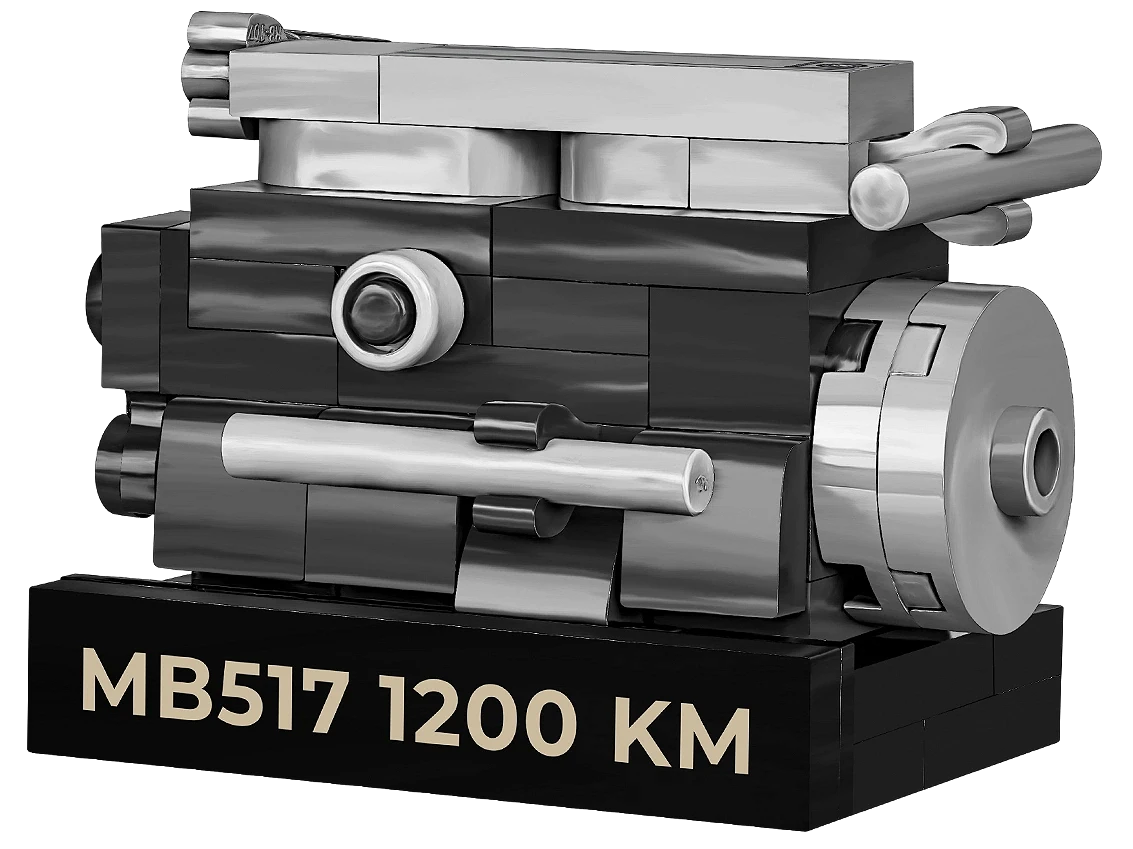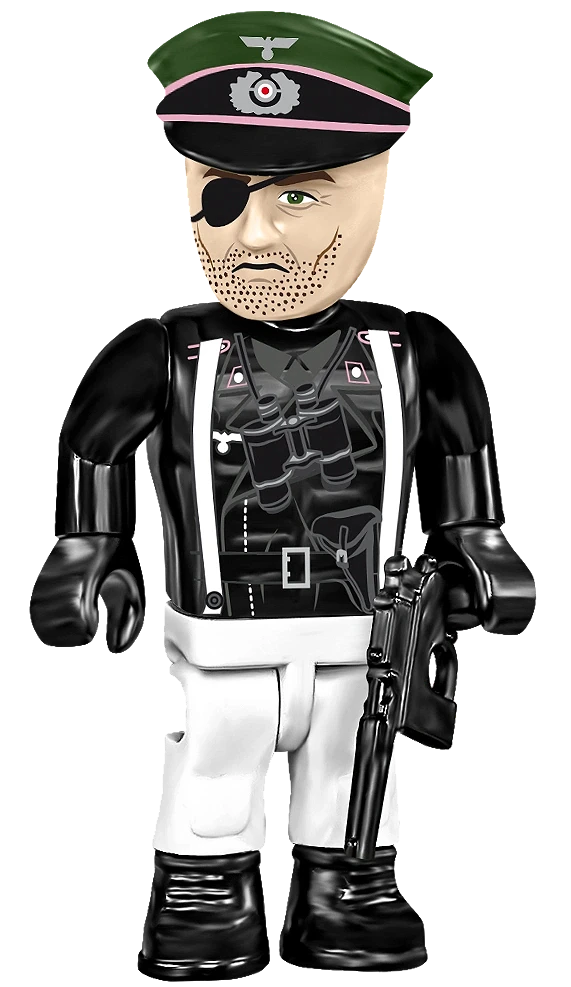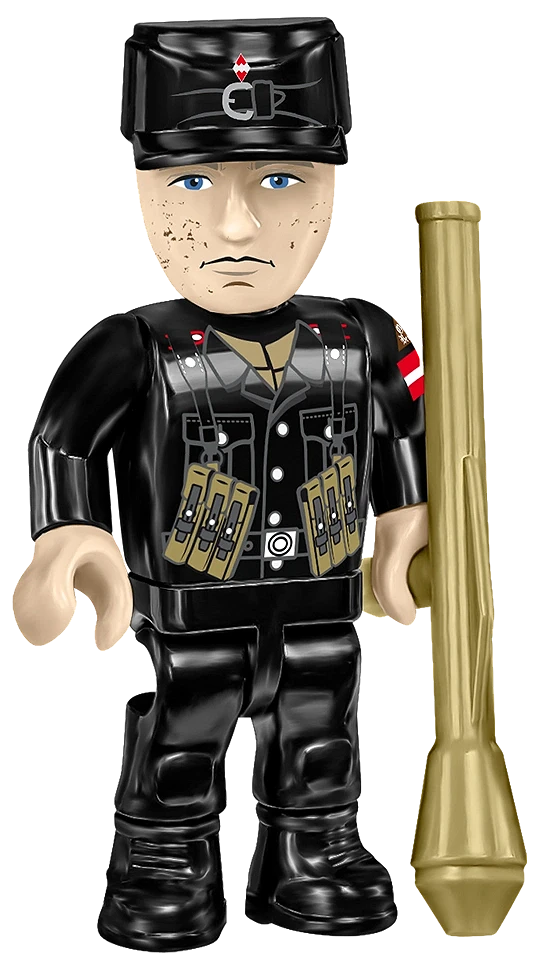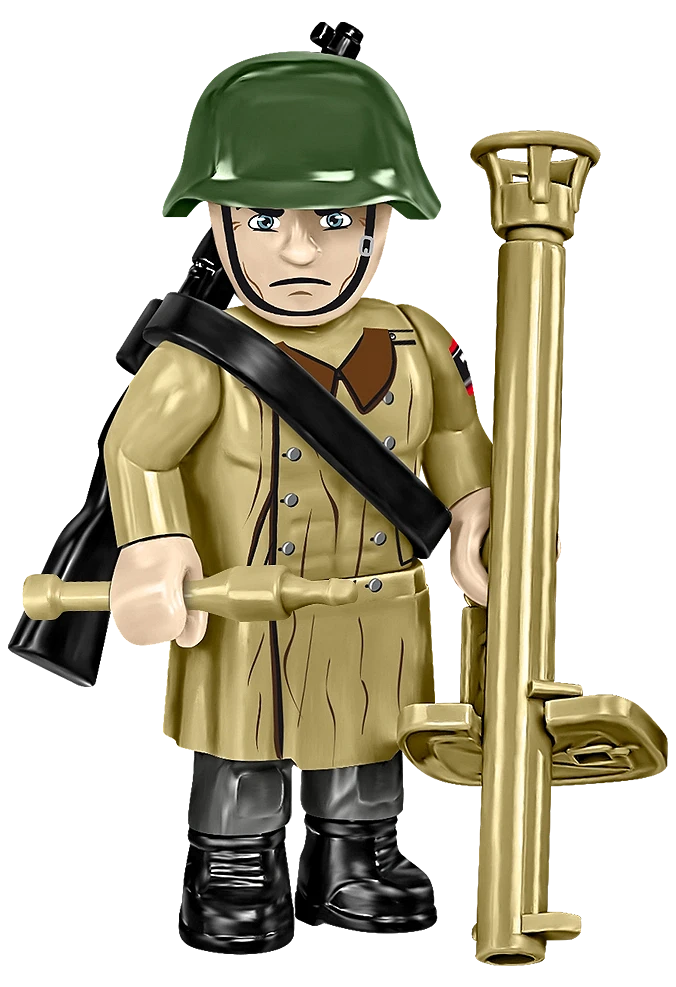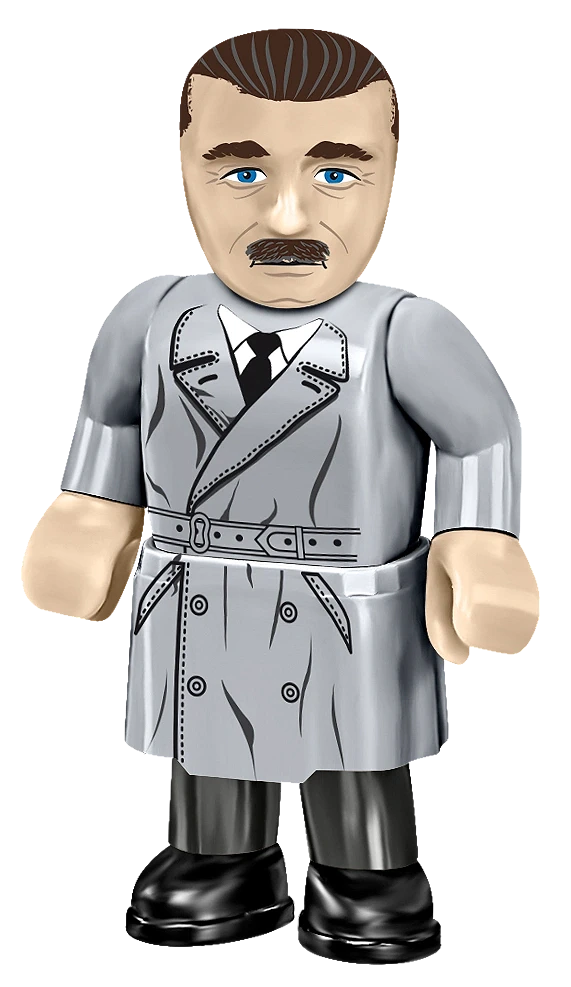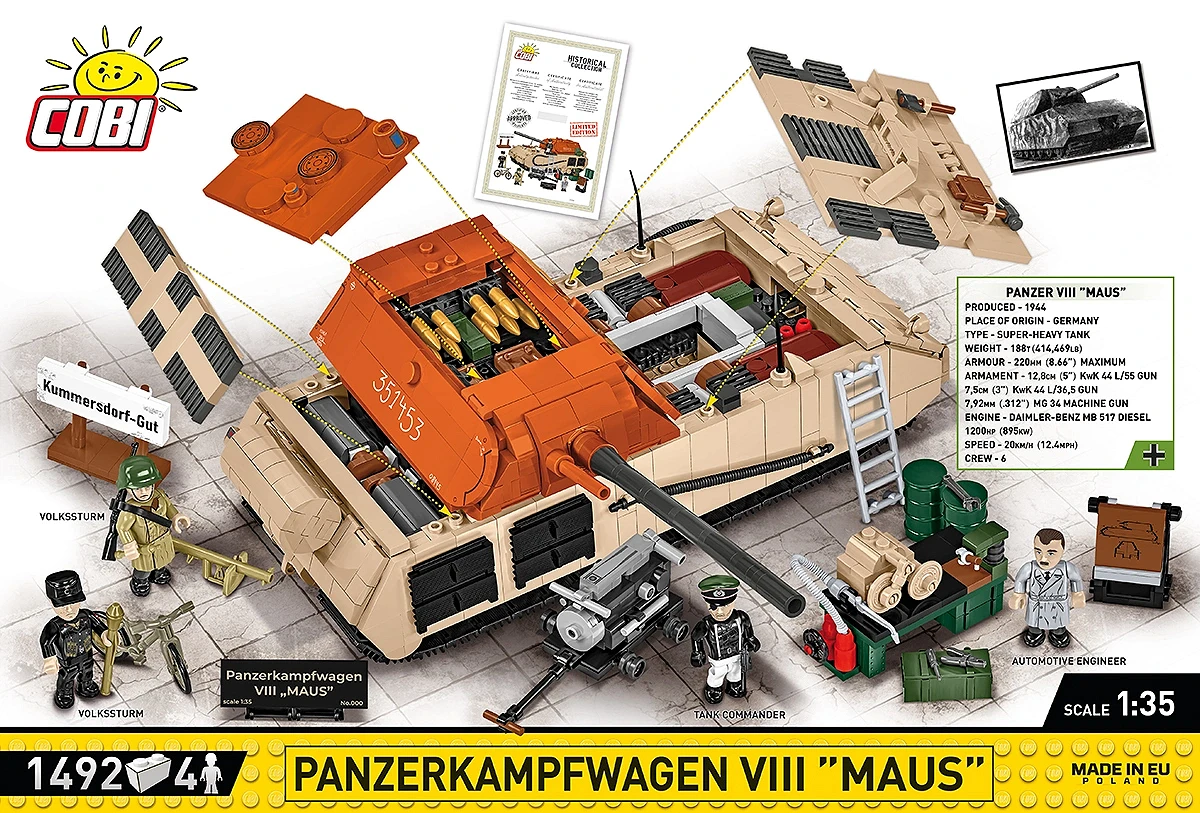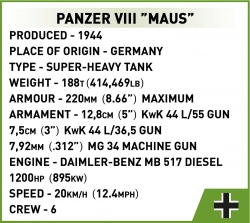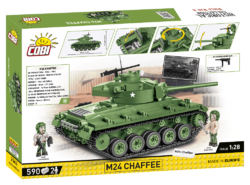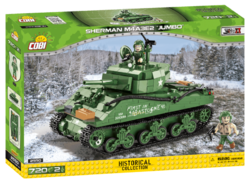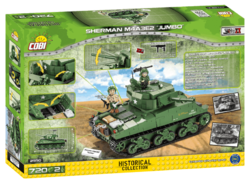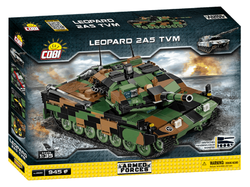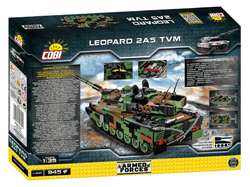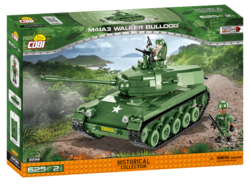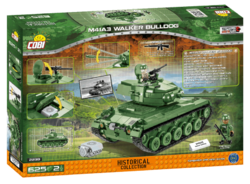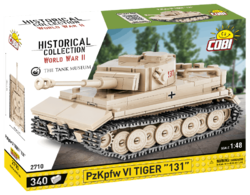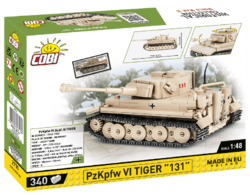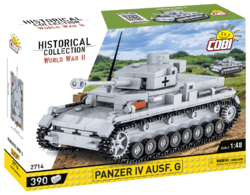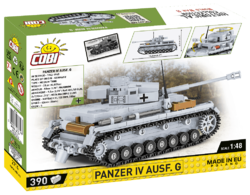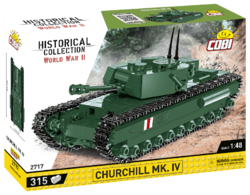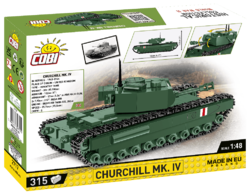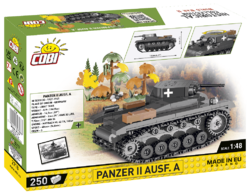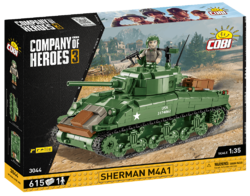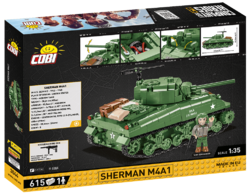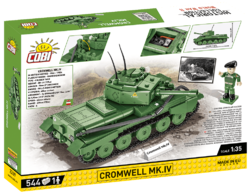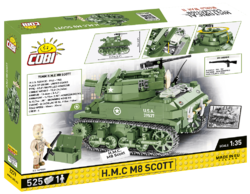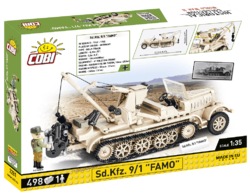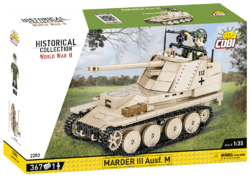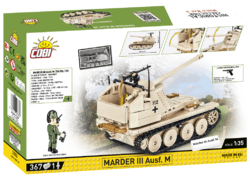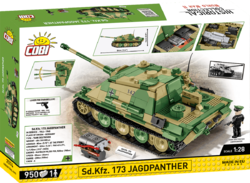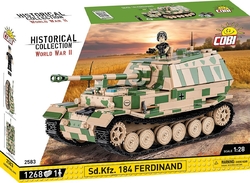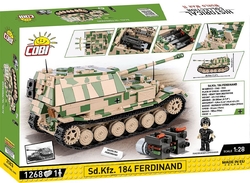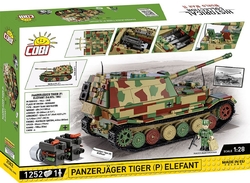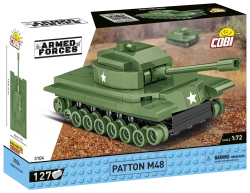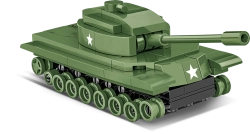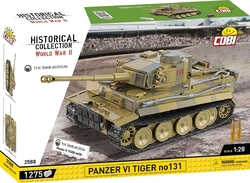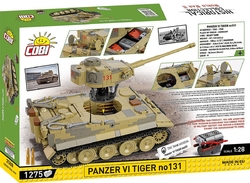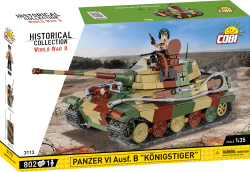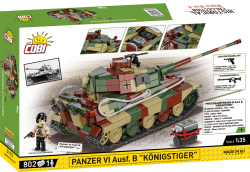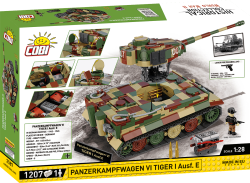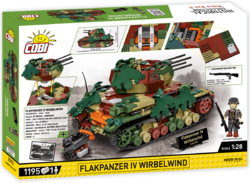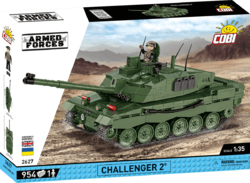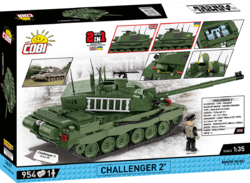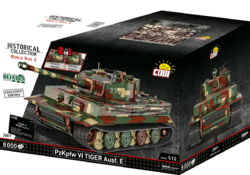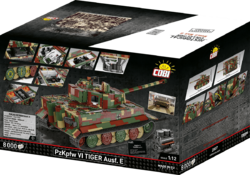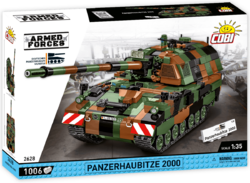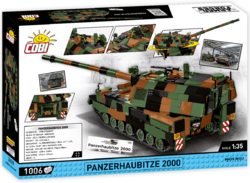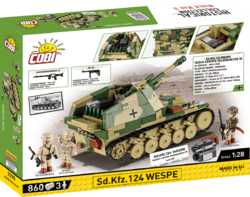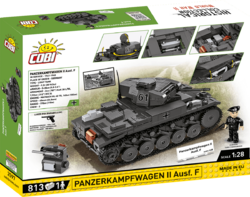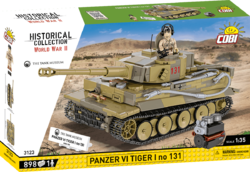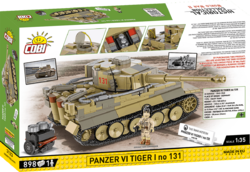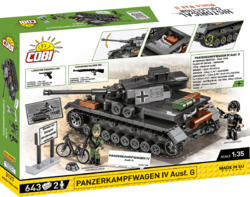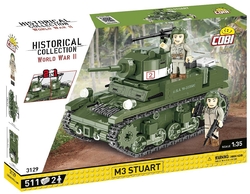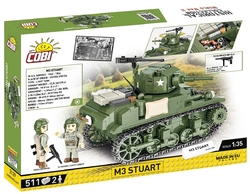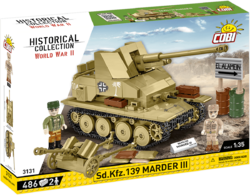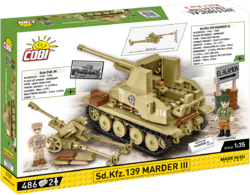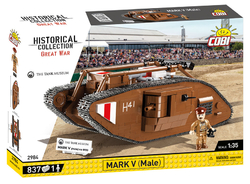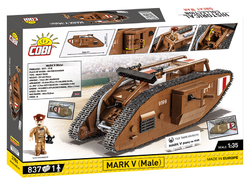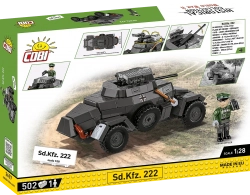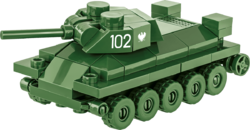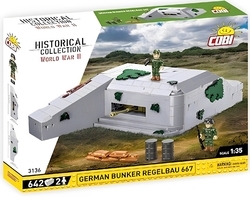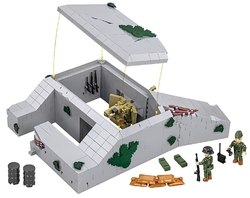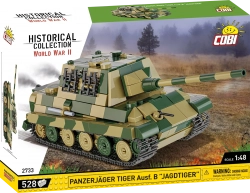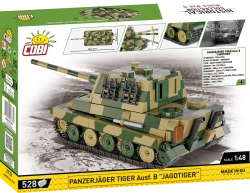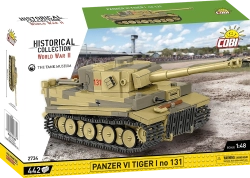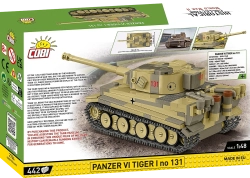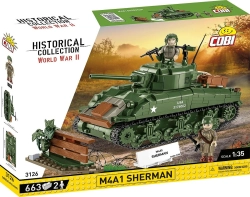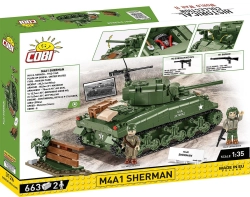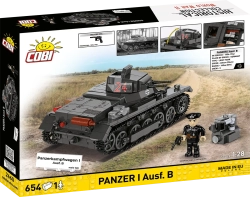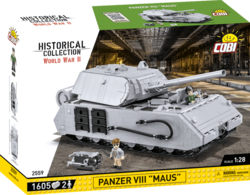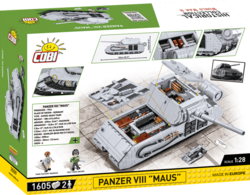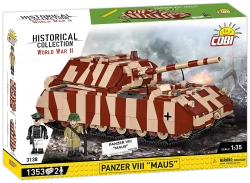A model kit of the Panzer VIII Maus super-heavy tank. The large and detailed kit has a removable upper part of the turret with a space for the gunner, where ammunition is stored. The upper part of the hull, where the gearbox and Daimler engine are located, is also removable. The engine can be stored in the tank or displayed separately. The tank turret is rotatable with adjustable gun elevation. The tank tracks are functional and the model can be easily moved on a non-slip surface. The package also includes equipment for the prototype workshop of the Kummersdorf tank yard, which consists of an engine trolley, a workshop table, fuel barrels, a ladder, a welding machine and a toolbox. In the limited edition package, you will also find a figure of tank commander Paul Hausser with an eye patch, two Volkssturm soldiers with an anti-tank weapon and a figure of designer Ferdinand Porsche in a workshop coat. Inside the packaging of each limited edition kit is a certificate with a unique serial number certifying the originality of the product.
Show more
100 %
(1 Ranking)
| List Number: | COBI-3137 |
| EAN: | 5902251031374 |
| Warranty: | 24 months |
| Manufacturer: | COBI |
| Free shipping | |
| Price excluding VAT: | 2 151,60 Kč |
Latest reviews
All reviews
Verified customer
02.07.2025
Veľmi pekný a originálny model Maus-u v porovnaní s ostatnými podobnými produktami. Je naplnený množstvom častí a extrémne detailného príslušenstva (zbrane, nástroje atď.). Celý set je bez nálepiek - všetko pekne vytlačené na kockách. 4 krásne figúrky, ktoré majú veľa nových a zaujímavých častí, + sú tiež veľmi detailné.
Samotný tank je vo veľmi zaujímavej farebnej kombinácií, čo bol aj jeden z dôvodov, prečo som si vybral akurát tento model. Interiér veže a aj podvozku je tiež prepracovaný.
Nesmierne som si užil aj stavanie modelu - keďže obsahuje veľa maličkých častí, stavanie mi trvalo celkom dlho, ale vôbec som sa nenudil. Niektoré techniky stavania a využívania kociek boli veľmi inovatívne. Dosiahnuté uhly a tvary veľmi pekne a presne reprezentujú reálny tank.
Nemám absolútne žiadne výhrady k tomuto modelu. Je to naozaj unikát.
+
certifikát s vlastným výrobným číslom
+
detailné figúrky (4)
+
detailný model
+
dobrá cena za to všetko, čo dostanem
+
kvalita kociek
+
originálne farby
+
veľa príslušenstva
+
zaujímavý a zábavný proces stavania
-
mierka 1:35 (mohla byť 1:28)
Description
Parametres
Files and Links
Discussion2
Reviews1

» The construction kits will be shipped starting May 30, 2025 «
Did you know: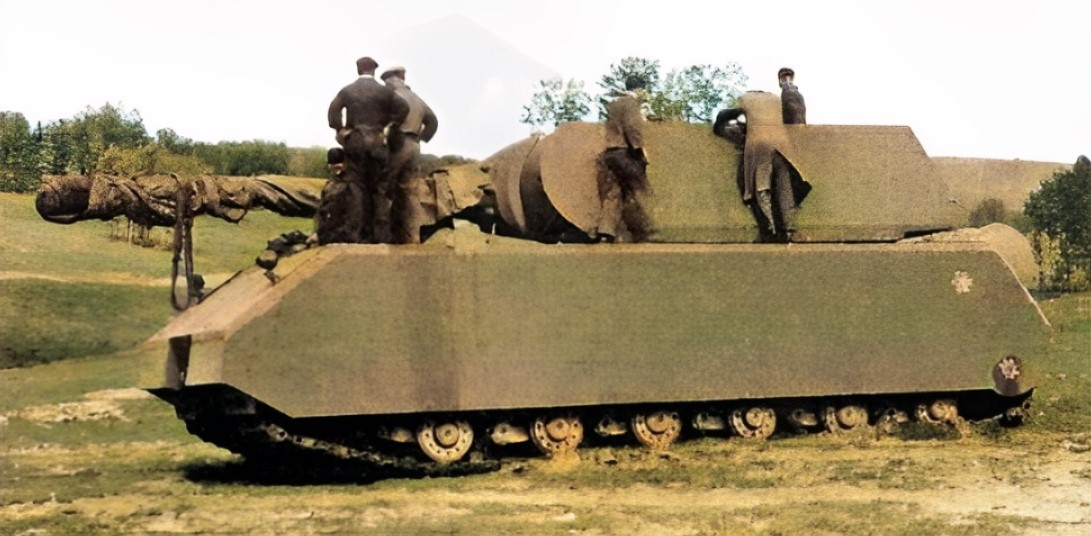
- The first plans for the super-heavy tank, originally named Mammut, were submitted by F. Porsche as early as 1942.
- By the end of the war, eight tanks were under construction, one of which was fully completed and capable of undergoing army tests.
- A total of 200 units were to be produced in two series, but in October 1943, A. Hitler personally canceled the order and ordered only the prototypes already in production to be completed.
- Even the most powerful engine available in Germany could not move the 188-ton tank at the originally planned speed of 20 km/h.
- Due to the extreme weight of the tank, by the end of the war there was no bridge in Germany capable of supporting it.
- Maus was theoretically capable of deep fording (up to 13 meters), but such operations were extremely risky due to the danger of getting stuck in mud or problems with the remote power supply cable.
- A special railway carriage had to be designed for potential transport of the tank, with sufficient platform width and load capacity.
- The Maus gearbox was manufactured at Škoda Plzeň.
- Neither of the two completed units ever fired at an enemy. One prototype was destroyed by the Germans in Kummersdorf to prevent capture, and the other was damaged during transport to defensive positions near Berlin.
- The tank captured by the Red Army was transported to the Soviet Union, where it remains on display in a military museum to this day.
- After the fall of Berlin, construction plans were discovered for an even heavier tank called the Mauerbrecher, which according to available information was never built. Legend, however, says that one unit was assembled and deployed in April 1945 during the defense of Berlin, where it collapsed into a subway tunnel and was later discovered by a drilling rig during city reconstruction, requiring the subway route to be diverted.
Technical specifications: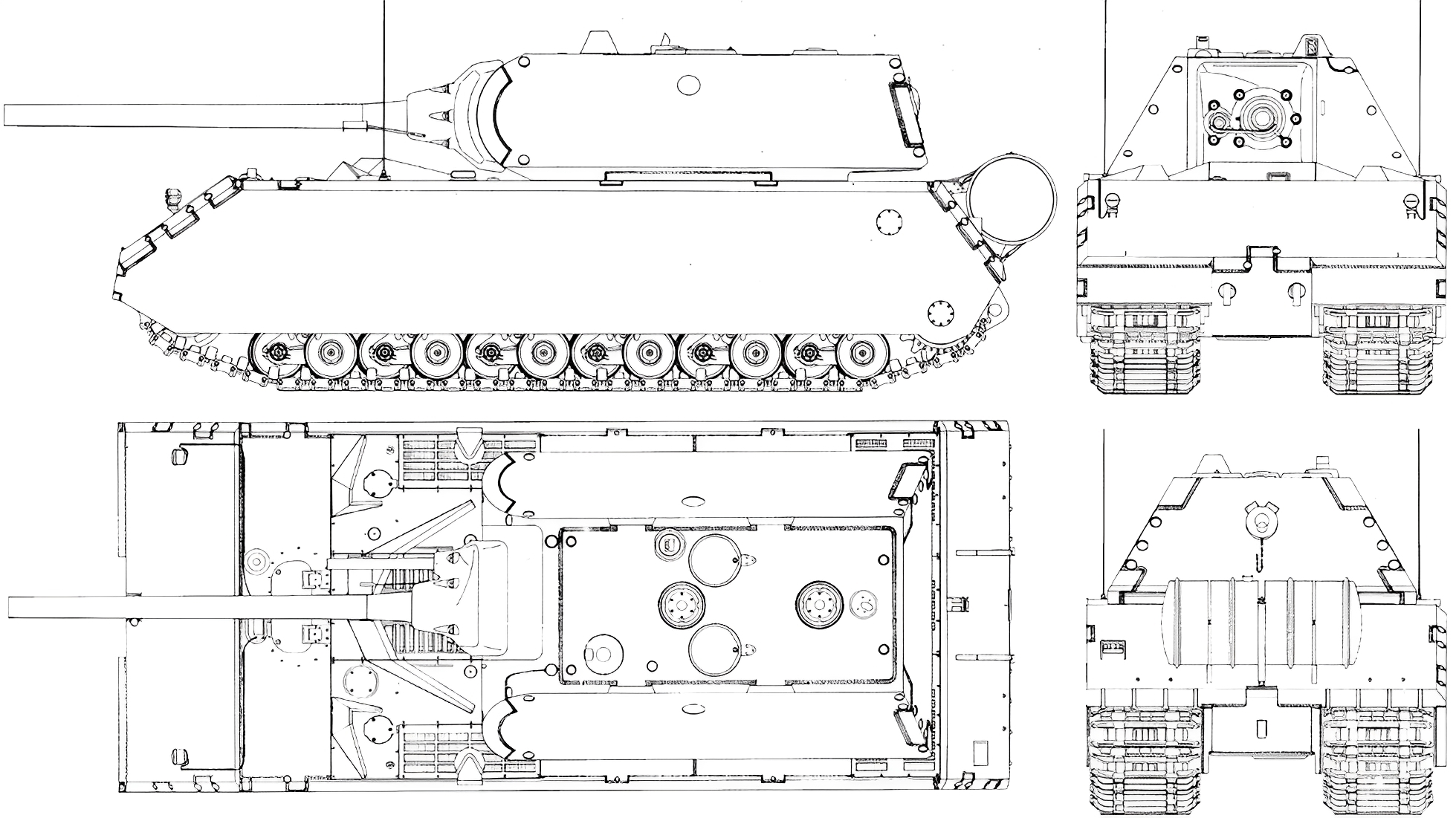
- dimensions: length 10.9 m, width 3.76 m, height 3.66 m
- weight: 188,800 kg
- armor: front 220 mm, side and rear 60 mm
- power unit: Daimler-Benz MB517 marine diesel engine, 44.5-liter 12-cylinder with 895 kW output, powering an electric drive
- maximum speed: 20 km/h
- internal fuel tank capacity: 1500 l + 700 l external tank
- fuel consumption: 940 l/100 km
- range: 160 km on road and 60 km off-road
- main weapon: KwK44 L/55 cannon, 128 mm caliber
- secondary weapon: KwK 44 L/36.5 cannon, 75 mm caliber + MG 34 machine gun, 7.92 mm caliber
- crew: 6 members
Heinz Guderian on the Maus tank:
“It is impossible to look at the Maus and not be impressed by this machine as an engineering marvel. Despite all technological innovations, the Maus was as vulnerable to close-range attacks as any other tank and therefore was unnecessary.”
| Scale | 1 : 35 |
|---|---|
| Recommended age | 10+ |
| Number of pieces | 1492 pcs |
| Dimensions after assembly | 30,5 x 12,5 x 11 cm |
| Number of figurines | 4 pcs |
| Contains luminous blocks | No |
| Material | Plastic |
| Collection | World War II |
| Compatible with other brand of kits | Yes |
100 %
5
1x
4
0x
3
0x
2
0x
1
0x
Veľmi pekný a originálny model Maus-u v porovnaní s ostatnými podobnými produktami. Je naplnený množstvom častí a extrémne detailného príslušenstva (zbrane, nástroje atď.). Celý set je bez nálepiek - všetko pekne vytlačené na kockách. 4 krásne figúrky, ktoré majú veľa nových a zaujímavých častí, + sú tiež veľmi detailné.
Samotný tank je vo veľmi zaujímavej farebnej kombinácií, čo bol aj jeden z dôvodov, prečo som si vybral akurát tento model. Interiér veže a aj podvozku je tiež prepracovaný.
Nesmierne som si užil aj stavanie modelu - keďže obsahuje veľa maličkých častí, stavanie mi trvalo celkom dlho, ale vôbec som sa nenudil. Niektoré techniky stavania a využívania kociek boli veľmi inovatívne. Dosiahnuté uhly a tvary veľmi pekne a presne reprezentujú reálny tank.
Nemám absolútne žiadne výhrady k tomuto modelu. Je to naozaj unikát.
+
certifikát s vlastným výrobným číslom
+
detailné figúrky (4)
+
detailný model
+
dobrá cena za to všetko, čo dostanem
+
kvalita kociek
+
originálne farby
+
veľa príslušenstva
+
zaujímavý a zábavný proces stavania
-
mierka 1:35 (mohla byť 1:28)










